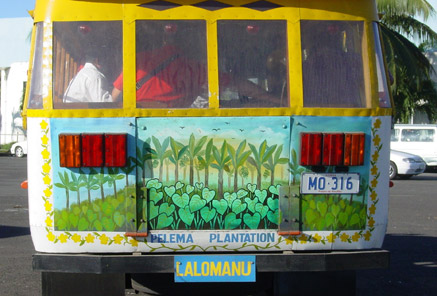Samoa
Geography
Land Use
People
Economy
Water Statistics
|

Status of Water Resources
- The surface water and groundwater resources of Samoa are fundamentally controlled by the geology.
- Drinking Water Supply. Surface water and groundwater are used for all types of water supply. Surface water provides approximately 65% of the water supply and groundwater 35%.
- Piped water supply access is estimated at between 90-95% of the population.
Problems with Water Resources and Associated Environment Issues
- Extent to which groundwater and surface water resources are used and alternative sources
Surface water and groundwater are the only sources of water used for water supply provision, with the exception of rainwater harvesting practiced widely in the Falealupo Peninsula and in otherwise isolated and rural households. Piped water supply access is estimated at between 90-95% of the population.
- The various and relative demands placed on watersheds/water resources
There has been no national assessment to date on the stress put upon the individual catchments and aquifers. This work will be undertaken as part of an on-going EU funded water sector support program (WaSSP). Limited historical surface water monitoring, and a lack of raw water abstraction metering, to date prevents accurate assessment of water withdrawal against low flow yields.
- Competing uses of water and priority uses
The competition for water resources appears in the Fuluasou and Vaisigano water catchments around Apia, where both public water supply and public energy supply are provided by the same river systems. Hydropower operations in Fuluasou river catchment is now non-operational due to insufficient water quality and complete infilling of the intake reservoir with sediment.
- 4 Sources of pollution of surface water, groundwater and coastal waters
There is no known water quality monitoring for wastewater associated pollution. An on-going Asian Development Bank (ADB) funded Apia wastewater and drainage project is presently in the design phase and is about to commence baseline monitoring. There is however ample visual evidence of wastewater contamination of streams around the urban Apia area. Solid waste disposal is also a problem within the low-lying populated areas, with obvious uncontrolled tipping into valleys. Sediment erosion is the most visible surface water pollutant within the catchments. Perhaps the most stark reminder of sedimentation in the watersheds is the complete infilling of the now abandoned Fuluasou Hydropower Dam reservoir. Salinisation is known to occur at some boreholes in Savaii, although this is generally thought to be saline up-coning (i.e. over-pumping of an individual borehole) rather than saline intrusion (over-abstraction from the aquifer as a whole). However a lack of systematic monitoring and groundwater investigation prevent further assessment.
Diagnostic Report
Demonstration Proposal
Hot Spot Analysis
Information on this page obtained from Integrated Water Resources Management programme's Diagnostic Reports (SOPAC 2007)
© 2024 SPC Water, Sanitation and Hygiene. All rights reserved.